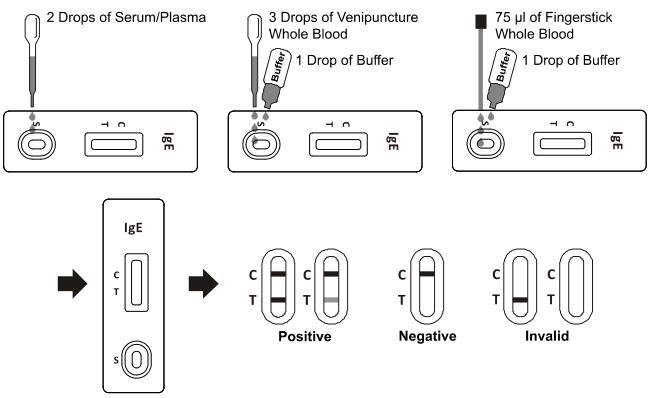详情
【SUMMARY】
Calprotectin is a 24 kDa dimer of calcium binding proteins S100A8 and S100A9. The complex accounts for up to 60% of the soluble protein content of the neutrophil cytosol. Calprotectin becomes available in the intestinal lumen via leukocyte shedding, active secretion, cell disturbance, and cell death.This results in elevated faecal calprotectin levels, which can be detected in the stool. Elevated faecal calprotectin levels therefore indicate migration of neutrophils into the intestinal mucosa, which occurs during intestinal inflammation.Faecal calprotectin has been used to detect intestinal inflammation, and can serve as a marker for inflammatory bowel diseases. Calprotectin is useful as a marker, as it is resistant to enzymatic degradation, and can be easily measured in faeces.
Lactoferrin is one of the components of the immune system of the body; it has antimicrobial activity (bacteriocide, fungicide) and is part of the innate defense, mainly at mucoses.In particular, lactoferrin provides antibacterial activity to human infants.
Human lactoferrin, a neutrophil derived glycoprotein, can be measured in feces and whole gut lavage as an indicator of intestinal inflammation in both IBD and infectious gastroenteritis. Recent studies have shown fecal lactoferrin (FL) as a sensitive biomarker for pediatric IBD. In addition, this biomarker can serve as an aid for guiding the diagnostic and therapeutic process for both pediatric and adult IBD.
【DIRECTIONS FOR USE】
Allow the test, specimen, buffer and/or controls to reach room temperature (15-30°C) prior to testing.
1.To collect fecal specimens:
Collect sufficient quantity of feces (1-2 mL or 1-2 g) in a clean, dry specimen collection container to obtain maximum antigens (if present). Best results will be obtained if the assay is performed within 6 hours after collection. Specimen collected may be stored for 3 days at 2-8℃ if not tested within 6 hours. For long term storage, specimens should be kept below -20℃.
2.To process fecal specimens:
• For Solid Specimens:
Unscrew the cap of the specimen collection tube,then randomly stab the specimen collection applicator into the fecal specimen in at least 3 different sites to collect approximately 50 mg of feces (equivalent to 1/4 of a pea). Do not scoop the fecal specimen.
• For Liquid Specimens:
Hold the dropper vertically, aspirate fecal specimens, and then transfer 2 drops (approximately 80 μL) into the specimen collection tube containing the extraction buffer.
3.Tighten the cap onto the specimen collection tube, then shake the specimen collection tube vigorously to mix the specimen and the extraction buffer. Leave the tube alone for 2 minutes.
4.Bring the pouch to room temperature before opening it. Remove the test cassette from the foil pouch and use it within one hour. Best results will be obtained if the test is performed immediately after opening the foil pouch.
5.Hold the specimen collection tube upright and open the cap onto the specimen collection tube. Invert the specimen collection tube and transfer 2 full drops of the extracted specimen (approximately 80 μL) to each specimen well of the test cassette, then start the timer. Avoid trapping air bubbles in the specimen well (S). See illustration below.
6.Read results at 5 minutes after dispensing the specimen. Do notread results after 10 minutes.
7.Note: If the specimen does not migrate (presence of particles), centrifuge the extracted specimens contained in the extraction buffer vial. Collect 80 μL of supernatant, dispense into each specimen well of a new test cassette and start afresh following the instructions mentioned above.
|
Cat. No.
|
Product Description
|
Specimen
|
Format
|
Kit Size
|
Cut-Off
|
Status
|
|
OIBD-625
|
Calprotectin and Lactoferrin Combo Rapid Test Cassette
|
Feces
|
Cassette
|
10 T
|
/
|
CE
|
更多 Setia Scientific Solution 相关资料

 Malaysia
Malaysia